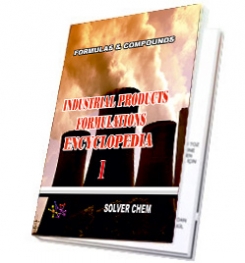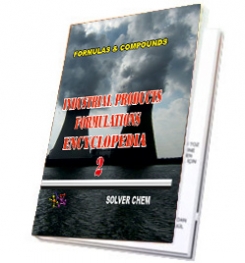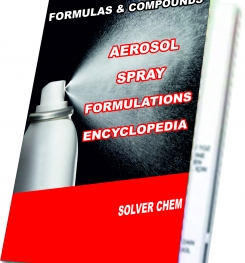There are some main type of commercial sequestering agents are:
- Aminocarboxylic acid base products
- Phosphates and Phosphonates
- Hydroxy carbroxylates
- Polyacrylates
- Sugar acrylates
1. Aminolycarboxylates
In aminopolycarboxylates, it is assumed that one molecule of sequestering agent complexes with one ion of metal. Depending upon the pH of the medium, i e acidic, neutral or alkaline, the preferential sequestering order or each product could change.
Some of the characteristics of some of these sequestering agents are summarised as below:
EDTA: Good sequestering agent for calcium and magnesium at alkaline pH but no sequestering agents on Fe3+ at alkaline pH. Not stable with oxidising agents. Low solubility in acidic medium.
NTA: Sequestering of Fe3+ only at acidic pH but sequestering of Cu2+ between pH 3 to 12. Low solubility in acidic medium. Not stable with oxidising agents.
DTPA: Good sequestering action Fe3+ under alkaline pH but complexes with alkaline earth salts are less stable than EDTA. slightly more resistant to oxidising agents. Low solubility in acidic medium.
2. Phosphates and Phosphonates
These sequestering agents are divided in two broad classes:
- Inorganic polyphosphates such as sodium hexameta phosphate (SHMP), sodium polyphosphate, sodium tripolyphosphate, sodium trimeta phosphate, sodium pyrophosphates
- Phosphonated aminopolycarboxylates such as EDTMP, DETMP, ATMP, HEDP, DTPMP
Inorganic phosphates work under specific conditions and work as sequestering agents by converting troublesome metal ions into water soluble complex by a process of ion exchange.
Phosphates of aminopolycarboxylic acids or phosphonates are derivatives of phosphorous acid and are characterised by a C-P bond, which has stronger hydrolytic stability than the P-O-P bond of polyphosphates. This type of sequestering agent has emerged as a major class of sequestering agent, since these possess more features than mere chelation. These characteristics are: Threshold effect, i e inhibition of precipitation of CaCO3, CaSo4 with sub-stiochiometric quantities of inhibitor
Phosphates of aminopolycarboxylic acids or phosphonates are derivatives of phosphorous acid and are characterised by a C-P bond, which has stronger hydrolytic stability than the P-O-P bond of polyphosphates. This type of sequestering agent has emerged as a major class of sequestering agent, since these possess more features than mere chelation. These characteristics are: Threshold effect, i e inhibition of precipitation of CaCO3, CaSo4 with sub-stiochiometric quantities of inhibitor
- Corrosion inhibition
- Resistance to hydrolysis
- Deflocculation i.e. stability effect on colloidal suspensions
Compared to popular amino polycarhoxylic acid based sequestering agents, these phosphonates based sequestering agents have a high chelation ratio. Apart from better chelation value or better chelation ratio, these phosphonates also have better iron chelation than EDTA and NTA.
3. Hydroxy Carboxylic Acids
Organic compounds that have several hydroxylic groups often have the property of preventing precipitation of bi and trivalent metal cationis in an alkaline medium. Some of the well known products in this category are:
Citric acid, Tartaric acid, Gluconic acid and Oxalic acid.
These are less important sequestering agents, compared to aminocarboxylic acid or phosphonates. Gluconic acid/sodium gluconate has been found to be an effective chelating agent for iron under alkaline conditions.
4. Polyacrylates
Polyacrylates are effective dispersants, with mild chelation values and protective colloid properties. The chelation values of polyacrylates have no demetallising effect on metal containing dyestuffs. They are completely non foaming.
They are very suitable as dyebath conditioners, soaping agents and washing aids. Being non surface active agents they are easily rinsable and thus reduce the quantity of water required for removing their traces from the substrates, unlike all surfactants. The typical chelation values offered by polyacrylates do not come close to the chelation values offered by amino polycarboxylates or the phosphonates. This problem has been overcome by development of sugar acrylates.
5. Sugar Acrylates
Sugar acrylates have sequestering values as high as amino polycarboxylates or the phosphonates. They are biodegradable, effective components in cellulosic fabric pretreatment during desizing, scouring, bleaching and mercerising. These products are characteristed by good chelation values from the acidic to the alkaline range and from temperatures of 45 to 115øC. They also exhibit no demetalising effect on metal-containing dyestuffs and are non-foaming. They are ideally recommended in pretreatment for desizing, scouring and bleaching and as dyebath conditioners during the cellulosic dyeing.
SEQUESTERING AGENTS
INDUSTRIAL PRODUCTS
FORMULATIONS
ENCYCLOPEDİA - 1
is enough.

This encyclopedia has many formulations of textile chemicals and derivatives,textile pigment printing paste formulas,silicone micro emulsion preparation,cationic fixator,dispersing agent for textile chemicals,stabilizating agent in textile processing,ion immobilizing agents,hydrogen peroxide stabilizer,sequestering agents in textile chemicals,anti pilling agent in textile processing,cationic softener,nonionic softener,silicone softener manufacturing processes, sizing agent in textile chemicals,organic and organomineral fertilizers for house plants, polyurethane floor coating cleaner formulations,epoxy floor coating cleaner production process,polyurethane concrete coating cleaning detergents, formulations of emulsifier and emulsions,ultrasound gels formula,medical gels manufacturing,ecg gels making,cats and dogs care and cleaner products formulations, aircraft and airport care and cleaner products production,corrugated cardboard adhesive and hardeners resin manufacturing process,glass products,pencil types production,chalk formulations,chafing fuel gel making formulas,kindling fuel gel productions,industrial powder degreaser, industrial fluid degreaser,welding burn marks remover and cleaner products formulas,wood furniture cleaner and polisher formulation,aluminium cleaning and polishing agents formulas,fuel tank cleaner formulations,shoe care and polisher productions,wicrowave exterior cleaner making,concrete care and cleaner products manufacturing,mortar and brick cleaner formula,marble crystallizers production,toilet reservior block manufacturing process,vinyl cleaner and polisher formulations.

All industrial products in the encyclopedia are producible easily. You need no help and no technıcal support. The encyclopedia is enough to produce textile chemicals itself.
INDUSTRIAL PRODUCTS
FORMULATIONS
ENCYCLOPEDIA - 1
is written clear and understandable.
RELATED TAGS: What is sequestering agent, how to make sequestering agent, Sequestering Agent making, properties of sequestering agent, how to make stabilizing agent in textile, Dispersing agent manufacturing process, formulations of dispersing agent, leveling agent production process, formula of dispersing agent,leveling agent composition, compounds, Making dyes fixator, properties of dyes fixator, application of dyes fixator, Dyes fixator what, how to make fixator in textile, formula of cationic fixator, composition of cationic fixator, Silicone microemulsion properties, making microsilicone emulsion, how to make silicone microemulsion,formulation of silicone micro emulsion, silicone microemulsion production process, types of dyes, how to use textile dyes, composition of textile dyes, using textile dyes, What is textile pigment printing binder, pigment printing binder production process, textile pigment printing paste composition, compounds, formulas of textile pigment printing binder, how to make textile chemical, making textile chemicals, production of textile chemicals, textile chemicals compositions, compounds, formulations textile chemicals, textile chemicals compounds, formula of textilşe chemicals, textile chemicals manufacturing,textile chemicals manufacturer, chemicals used in textile processing, textile chemicals products,textile processing solution, how to process textile chemicals,textile chemicals formulations,textile chemicals production process.
3. Hydroxy Carboxylic Acids
Organic compounds that have several hydroxylic groups often have the property of preventing precipitation of bi and trivalent metal cationis in an alkaline medium. Some of the well known products in this category are:
Citric acid, Tartaric acid, Gluconic acid and Oxalic acid.
These are less important sequestering agents, compared to aminocarboxylic acid or phosphonates. Gluconic acid/sodium gluconate has been found to be an effective chelating agent for iron under alkaline conditions.
4. Polyacrylates
Polyacrylates are effective dispersants, with mild chelation values and protective colloid properties. The chelation values of polyacrylates have no demetallising effect on metal containing dyestuffs. They are completely non foaming.
They are very suitable as dyebath conditioners, soaping agents and washing aids. Being non surface active agents they are easily rinsable and thus reduce the quantity of water required for removing their traces from the substrates, unlike all surfactants. The typical chelation values offered by polyacrylates do not come close to the chelation values offered by amino polycarboxylates or the phosphonates. This problem has been overcome by development of sugar acrylates.
5. Sugar Acrylates
Sugar acrylates have sequestering values as high as amino polycarboxylates or the phosphonates. They are biodegradable, effective components in cellulosic fabric pretreatment during desizing, scouring, bleaching and mercerising. These products are characteristed by good chelation values from the acidic to the alkaline range and from temperatures of 45 to 115øC. They also exhibit no demetalising effect on metal-containing dyestuffs and are non-foaming. They are ideally recommended in pretreatment for desizing, scouring and bleaching and as dyebath conditioners during the cellulosic dyeing.
TEXTILE CHEMICALS FORMULAS
AND
PRODUCTION METHODS
AND
PRODUCTION METHODS
MANUFACTURING PROCESS OF SEQUESTERING AGENT is not very complicated. For the production, there is need usable and tried a formulation, raw materials and mixing tank. For raw materials to be used, quantities to be used and ingredients usage rankings, you should look into this formulation. Therefore, formulation and productıon methods of sequestering agent are important. If you have not a good formulation, you cannot make healthy and efficient production of any sequestering agent in textile chemicals.
If you need any manufacturing formulations and production methods about
SEQUESTERING AGENTS
INDUSTRIAL PRODUCTS
FORMULATIONS
ENCYCLOPEDİA - 1
is enough.

This encyclopedia has many formulations of textile chemicals and derivatives,textile pigment printing paste formulas,silicone micro emulsion preparation,cationic fixator,dispersing agent for textile chemicals,stabilizating agent in textile processing,ion immobilizing agents,hydrogen peroxide stabilizer,sequestering agents in textile chemicals,anti pilling agent in textile processing,cationic softener,nonionic softener,silicone softener manufacturing processes, sizing agent in textile chemicals,organic and organomineral fertilizers for house plants, polyurethane floor coating cleaner formulations,epoxy floor coating cleaner production process,polyurethane concrete coating cleaning detergents, formulations of emulsifier and emulsions,ultrasound gels formula,medical gels manufacturing,ecg gels making,cats and dogs care and cleaner products formulations, aircraft and airport care and cleaner products production,corrugated cardboard adhesive and hardeners resin manufacturing process,glass products,pencil types production,chalk formulations,chafing fuel gel making formulas,kindling fuel gel productions,industrial powder degreaser, industrial fluid degreaser,welding burn marks remover and cleaner products formulas,wood furniture cleaner and polisher formulation,aluminium cleaning and polishing agents formulas,fuel tank cleaner formulations,shoe care and polisher productions,wicrowave exterior cleaner making,concrete care and cleaner products manufacturing,mortar and brick cleaner formula,marble crystallizers production,toilet reservior block manufacturing process,vinyl cleaner and polisher formulations.

All industrial products in the encyclopedia are producible easily. You need no help and no technıcal support. The encyclopedia is enough to produce textile chemicals itself.
INDUSTRIAL PRODUCTS
FORMULATIONS
ENCYCLOPEDIA - 1
is written clear and understandable.
RELATED TAGS: What is sequestering agent, how to make sequestering agent, Sequestering Agent making, properties of sequestering agent, how to make stabilizing agent in textile, Dispersing agent manufacturing process, formulations of dispersing agent, leveling agent production process, formula of dispersing agent,leveling agent composition, compounds, Making dyes fixator, properties of dyes fixator, application of dyes fixator, Dyes fixator what, how to make fixator in textile, formula of cationic fixator, composition of cationic fixator, Silicone microemulsion properties, making microsilicone emulsion, how to make silicone microemulsion,formulation of silicone micro emulsion, silicone microemulsion production process, types of dyes, how to use textile dyes, composition of textile dyes, using textile dyes, What is textile pigment printing binder, pigment printing binder production process, textile pigment printing paste composition, compounds, formulas of textile pigment printing binder, how to make textile chemical, making textile chemicals, production of textile chemicals, textile chemicals compositions, compounds, formulations textile chemicals, textile chemicals compounds, formula of textilşe chemicals, textile chemicals manufacturing,textile chemicals manufacturer, chemicals used in textile processing, textile chemicals products,textile processing solution, how to process textile chemicals,textile chemicals formulations,textile chemicals production process.

|
|

|
|

|
|
